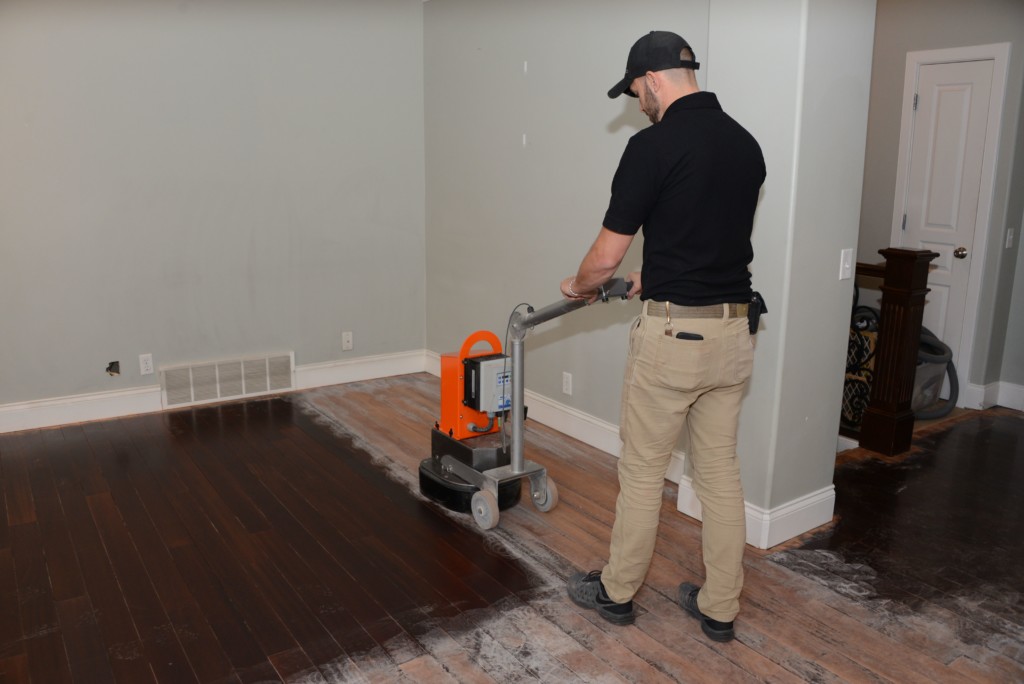How Long Have You Been Living With Damaged Floors?
Like many people who have older homes there always comes a time when you look at your beloved hardwood floor and begin to see more problems than beauty. One of the things that delighted me about my place when I first bought it was the hardwood floors. But lately, after ten years of living with them, they are beginning to show their age. It isn’t that they look bad; it’s just that they could look better. But how do you decide when it is worth the time and effort to take that next step and refinish your hardwood floor? And just how much of it do you need to do in terms of replacing boards versus a little elbow grease to take out the grooves that have begun to appear.
Follow These Steps
First – You need to do a few simple tests to see what boards are in need of replacement. If when you walk across the floor, a spot feels spongy or soft, you might want to check that board to see if it is warped or has become damaged. Is it near a spot that gets a lot of water, like a sink or shower? You might want to consider replacing the board and then add a waterproof covering, such as a linoleum floor mat, to protect that area in the future. Are there a few boards that seem to sag as you walk across them? If you can get to the sub-flooring through a basement you can check and see if they simply need to be re-nailed or if there is some actual damage and you need to replace them altogether.
Secondly – Look at each board individually to see if they have deep scratches, perhaps ones that have been refinished before. The general rule of thumb is that you cannot refinish a place in a board more than a few times before there’s not enough wood left to sand it down. If you can, check the board that is damaged to see if there is enough good wood left to do another sanding job. Again, if you can see the board flooring from below, it will help you to see how much wood you have left for sanding. If that isn’t available, try looking at the edge of the board or near a floor heat register to see how much wood you have left.
Third – Once you have replaced the boards that are either too damaged or don’t have enough wood to allow another refinishing, you can assess the damage on your good boards and see if you need to finish to whole remaining floor (my recommendation, it looks better) or simply touch up a few outstanding boards that are particularly bad. You can also refer to our handy guide that helps gauge the level of damage to your floors.

Be Prepared
Preparation for refinishing – This is very important, or you may end up with worse damage than before you started. Always check for gaps between boards before you begin. It is important to understand that wooden floors breathe; they expand in the summer when the air is generally damper and contract in the winter when that dry indoor heat is all around them. So, if you are checking in the summer and they have gaps, you will need to fill these before you begin your refinishing project. If you are planning to refinish in the winter, be sure you leave some gaps between boards or they will buckle in the summer when they expand. You will need to judge by your own weather, you know what season is the most humid for your area.
Once you’ve made the decision to have your hardwood floors refinished, then it’s time to bring in a professional. Hardwood refinishers like N-Hance have the specialized sanders, experience and tools to get the job done right, with very little effort from you and will create a beautiful surface that will last another 20 years. Want to learn more about how we can help? Give us a call today and we’ll setup a free in-home estimate.

